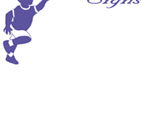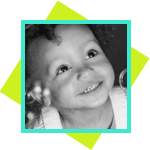|
When parents and physicians
are pursuing concerns about a child’s development, one crucial component is the
audiological screening. This screening is particularly important for children
suspected of having a communication or developmental disorder. Increasingly,
routine audiological screenings are recommended for all newborn babies.
“It seems like she doesn’t hear me.”
“When I call his name, he doesn’t respond.”
“I can’t figure it out: sometimes it seems like he can’t
hear, sometimes loud
noises upset him. What’s going on?”
The relationship between a child’s hearing, communication, and overall development
is complex: A child who appears to have a developmental delay may, in fact, have
a hearing impairment. A child with a hearing impairment that goes undiagnosed
may experience resulting delays in development and communication. A child with
a communication or developmental disorder may also have related issues with sensitivity
to sound. For parents, all of this may seem like a puzzle they can’t solve. The
solution is simple: when addressing concerns about a child, a developmental
screening should be followed by audiological testing.
The term “audiological” takes its roots from the word “audio,” which
means sound or hearing. A child’s ability to process sound has a profound impact
on the child’s ability to understand and communicate. When a child appears to have difficulty seeing, vision testing enables a physician
to determine the nature and scope of the problem. Is the child nearsighted? Farsighted?
Blind? Colorblind? Or are there other concerns? Just as it is important to distinguish between different vision impairments,
it is crucial to understand what “auditory,” or hearing and sound-related,
issues might be present. This is sometimes referred to as a “differential
diagnosis” process. There are many names for disorders of hearing and communication,
depending on their cause and their effect. Some of these include: Central Auditory
Processing Disorder; Hearing Impairment; Deafness; Pervasive Developmental Disorder. Audiological testing often takes place at a hospital, and despite the clinical
environment, the screening is designed to be child-friendly. Often, a young child
will simply sit on his or her parent’s lap while a skilled professional will assess
hearing through play, toys, and puppets. Audiological testing can take many different forms, depending on the age of the
child. Today, there is increasing interest in having hearing tests made standard
for newborns. The American Academy of Pediatrics issued a
policy
paper stating, “Significant
hearing loss is one of the most common major abnormalities present at birth and,
if undetected, will impede speech, language and cognitive development.”
When a routine developmental screening raises concerns, or a child is at risk
of atypical development or a communication disorder, the following types of audiological
tests may be conducted:
- Otoacoustic emissions: This non-invasive screening is done
with a small probe
inserted into the ear canal.
- Auditory brainstem response: Electrodes are placed on the
head, and brain wave
activity in response to sound is recorded.
- Visual reinforcement audiometry: This is the method of choice
for children between 6 months and 2 years of age. The child is trained
to look toward (localize)
a sound source. When the child gives a correct response, e.g., looking to
a source of sound when it is presented, the child is “rewarded’ through a
visual reinforcement
such as a toy that moves or a flashing light.
- Conditioned play audiometry: The child is trained to perform
an activity each time a sound is heard. The activity may be putting a block
in a box, placing
pegs in a hole, putting a ring on a cone, etc. The child is taught to wait,
listen, and respond.
- Acoustic Immittance Screening: This test is often done if
an otoacoustic emissions screening raises concerns. This screening may
include tympanometry, acoustic
reflex, and static acoustic impedance.
See the
American
Speech-Language-Hearing Association’s web site for more information
about these procedures, and for general information about Audiological Screening.
(Source of definitions:
ASHA)
Back to top
Next page =>
|




